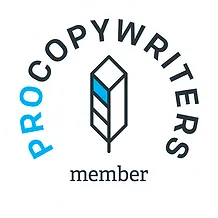Okay. I’ll admit it. I’m a hack.
When I started Swiped, this series of posts that pulls together great copywriting examples, I set myself one rule.
Don’t do Apple.
Don’t get me wrong. I love Apple, and I love their copy. I even liked that recent long copy ad more than most. But using Apple in a copywriting blog post is just so obvious. Everyone has done it. Now, just a few posts in, I’m breaking my rule and joining them. But bear with me.
It’s a look at Apple’s copy, and website copywriting – but I’m going a bit deeper into a single, specific technique. It’s one that I’ve stolen already. One you’ve seen fifteen times already on this page.
Make that sixteen.
Freelance Copywriters Hate Full Stops
Full stops are powerful punctation, period.
One of the earliest pieces of advice I received from a bigger, better freelance copywriter than myself was all about full stops in headings and lists. It was simple advice.
Don’t use them.
The argument is that, as their name suggests, they stop people. They make readers think they’ve reached a natural place to stop. They take away the momentum and the impulse to just keep reading.
Let’s look at an example. Here’s a list:
- Here’s a list item
- And another
- And another
That’s easy to read. The lack of a full stop and the use of ‘and’ brings the bullets together, making them incomplete unless you reach the end of the list. So people keep reading.
Meanwhile:
- This is a list.
- The list uses full stops.
- The full stops make you stop.
Do you see the difference? Those bullet points are complete in themselves. I’ve made it easier for you to read just one or two points, and done nothing to encourage you to read it all.
So hey, don’t use full stops on lists and headings. In fact, avoid them everywhere you can.
That’s what somebody told me. But nobody told Apple.
Here’s To The Crazy Ones. Who Use Full Stops.

Apple, what’s your problem?
It’s one thing to use full stops when a lot of people say you shouldn’t. If you want to break the natural flow of reading, you go ahead and do that.
But to add full stops into sentences where they’re not even necessary?
In the example above, taken from the Apple website, you’ve got yourself three lovely full stops. Two of them aren’t essential. One isn’t even grammatically correct.
Let’s take them out, to be clear what effect they have:
Thinner, lighter design. So much more than before and so much less, too.
That’s the same sentence, without the extra full stop in the middle. It’s more conventionally correct, but – in terms of tone – it changes everything. Suddenly, the header is longer, more wordy, more difficult to read. It’s the same words, put together in the same order. But it doesn’t feel the same.
That single full stop makes a world of difference. And, crucially, taking it out makes the sentence less reflective of what Apple stands for.
A Brand About Form and Function
Apple is well respected for its design. Jonathan Ive is one of the top 100 most influential people in the world, according to Time. He’s received a Knighthood. Members of the cult of Apple worship the ground he walks on.
But don’t confuse things. Apple isn’t just about making things look pretty. It’s not form over function. It’s both.
Take the iPhone. It’s a good looking device, but what really matters is the way it works. The way it fits in your hand. The way its operating system is optimised to put everything you need, exactly where you need it, accessible with a few taps or gestures.
It’s the same with Apple’s desktop OS, particularly when paired with a trackpad. Want to see your open windows? Swipe up. Done. Want to check notifications? Swipe from the side of the trackpad. Done. There’s no need to navigate a series of different screens. The OS shows you what you need to see, instantly.
Form matters. Apple’s design work attracts people to the brand, and helps the company to maximise its margins. Function matters too. Apple’s intuitive systems make their products convenient and simple to use.
And both of these things have something in common. Style and substance are brought together under the bracket of precision.
Using Full Stops to Create a Precise Voice
Apple gives its customers the best designs and the best functionality through precision. Precision manufacturing, precise input devices, and precise displays. They need a tone of voice that matches, and that’s where those full stops come in.
Apple uses full stops throughout its copy, even where they don’t seem to make sense. Even where they’re not really necessary. And it makes everything feel more precise. More immediate. Specific.
Swiped is about taking inspiration from these techniques and examples, and this is something I’ve already used quite widely. You’ve probably seen full stops in the headings on this website, designed to make the copy feel pragmatic and to the point. There’s no waffle, just a practical statement about copywriting.
The full stops emphasise how efficient and specific I’m being, and suggest the same about the work.
What we can take from Apple doesn’t contradict that copywriting advice I received when I was getting started. Full stops make people stop, period. But that’s not always a bad thing.
If you’re sensible about the rhythm of your copy and the way you want people to read it, a well-placed full stop can completely transform the way you sound.
